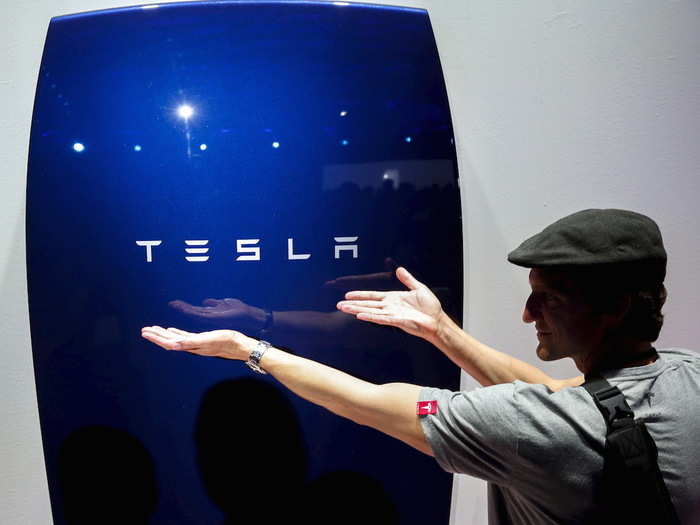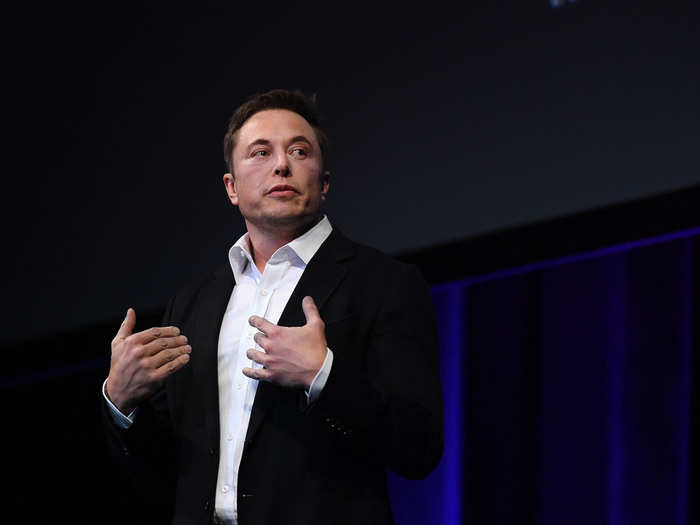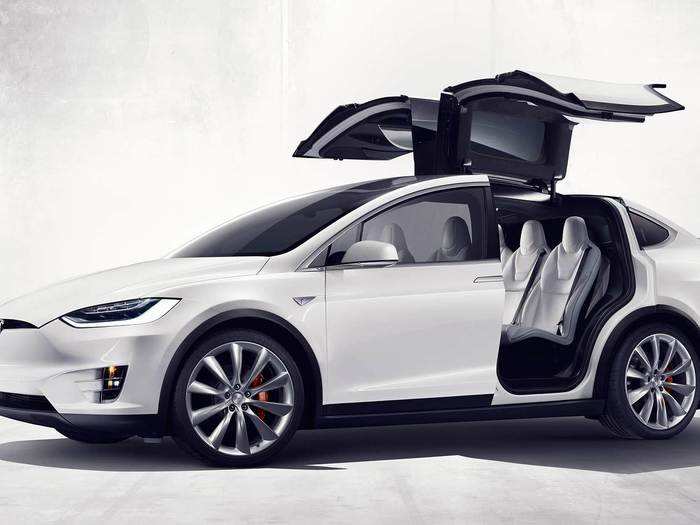- Home
- slideshows
- miscellaneous
- Tesla is about to report earnings and it could get ugly - here's what to expect
Tesla is about to report earnings and it could get ugly - here's what to expect
Forward-looking statements about not needing to raise any money in 2018.

Exactly zero interest in Tesla's energy storage or battery businesses.

Tesla Energy and Tesla Solar Roof have been useful means to propel the Tesla narrative and keep Wall Street engaged, adding some additional meat for analysts to chew on.
But both these businesses are nowheresville relative to the cars.
On a purely objective basis, Tesla isn't today worth $285 a share. If we're generous, it's worth $150. If we look at the balance sheet and the value of its assets, it could arguably be worth zero, or less than zero.
If you wanted to buy Tesla, you'd have to spend more than Ford is worth to acquire billions in debt and an EV order book that hundreds of thousands of vehicles from being fulfilled.
What about the factory in Fremont, CA, Tesla's main asset? Nobody wants a car factory in Northern California.
What about the Gigafactory in Nevada? Maybe. But it's part of a long-term deal with the state. So you'd have to take that on.
History lesson: when Chrysler was bailed out and went bankrupt in 2008, nobody wanted any part of the carmaker. The US government has to arrange a shotgun marriage with Fiat and pony up billions in financing.
What about the Tesla brand? Hmmm. It's possible that a Chinese company might see Tesla as an ideal foothold in the US market. This has been much-discussed. But when you get right down to it, Tesla is a debt-laden car company with a couple of iffy sidelines. And those kinds of car companies, if they aren't too big to fail (because they employ hundreds of thousands of people), tend to vanish without a trace.
A resigned attitude toward Model 3.

The Model 3 rollout is easily the worst vehicle launch I've ever seen in over a decade of covering the auto industry. That anyone is even paying attention to it is remarkable. Carmakers launch new vehicles all the time. They just show up. This has been business-as-usual for a century.
That said, Tesla is slowly getting its act together with Model 3. Most likely, the company is hitting its goal of around 2,500 in weekly production. The ramp is supposed to head toward 5,000 by the end of the second quarter, and that's within reach — ramps get easier as production increases.
This all means that history will be forgotten by investors. It should be obvious that the Model 3 was prematurely launched last July and that Tesla didn't have a good plan to achieve its production targets. I was sort of stunned when the car showed up last summer — I'd anticipated the tail end of the third quarter or the middle of the fourth. I even made a bet that Tesla would debut the Model 3 in 2018 — by rolling something like ten cars off the assembly line and calling it a success.
The Tesla playbook is to avoid confronting its inability to perfect the fundamentals while pretending it's reinventing the wheel. Both batteries and assembly of the Model 3 were supposed to be radically reimagined through increased automation, but for Tesla that's been a bust. So, back to doing things the way everybody else does — or more accurately, with far more workers than the typical assembly line, because Tesla did things wrong to begin with and now has to ramp up the humans to avoid a catastrophe.
Tesla's stock hasn't completely collapsed, so investors have clearly figured this out and are resigned to getting the Model 3 that we have versus the Model 3 that everybody wanted. Fortunately, it looks to be a decent car that will make owners happy. But wow, what an agonizing, melodramatic birth!
A lecture from Elon.

Wall Street analysts, most of whom know the traditional auto industry quite well and are experts on how cars have been manufactured since the 1980s, will dutifully ask Musk various technical questions about factory operations and engineering challenges and robots and stuff.
In reply, Musk will offer a lecture about the production "S-curve," with assorted didactic riffs concerning battery engineering, exotic forthcoming products, and how Tesla swings from a multi-billion-dollar 2017 loss to a miraculous late 2018 profit.
To his credit, he will also probably admit that he was an idiot to go all-in with automation. He tends to balance his haughty side with a hefty dose of humility about his failings.
Not enough credit for Tesla's core business.

The sad thing about the awful Model 3 launch has been the overlooking of how solid Tesla core business has become.
Most of the vehicles sold last year were Model S sedans and Model X SUVs. These are luxury EVs that bring in $100,000 on average and could be very, very profitable. They haven't been up to this point. But that's because Tesla hasn't slowed down to consolidate its luxury business.
Musk wants to save the world, for real, so the Model 3 was necessary. There's now needle-moving on global warming without a mass-market EV.
But under different, less ambitious circumstances, the S and X business make for an appealing niche automaker. If Tesla shares were repriced around that business, they wouldn't be worth $300. But they wouldn't be on the verge of tanking, either, and Tesla could rapidly shift to being sustainably profitable.
Popular Right Now
Popular Keywords
Advertisement